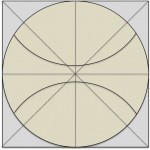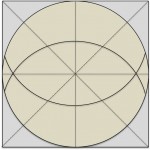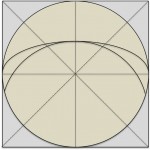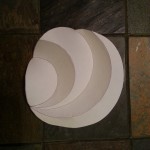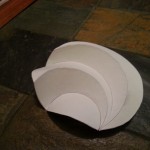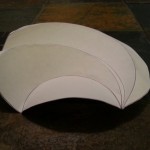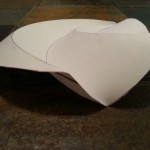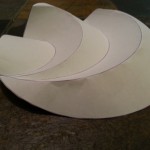Origami
I love origami. In middle school, I used to borrow a huge book on origami from the school library almost every week for a year. I made everything in that book. I spent the following summer entertaining my brothers with my paper craft (some learned and some invented) and simple paper puppets. I believe it was that summer that I invented my paper airplane that I would later call the Stealth Fighter. You could throw it straight up in the air and it would take a very long time to make it back to the ground.
Standard origami uses a sheet of square paper, which is folded into shapes to replicate our world in obvious and not-so-obvious ways. Much of modern origami has gotten so advanced that it must be designed using algorithms. I am fascinated by this, but I am more fascinated by the simple principles that create those complex forms.
Hoi-ru
I thought it would be interesting to explore ways to distort and shape a 2D plane so that it broke into the third dimension. I call this approach Wheel Origami or Hoi-ru (hoi-ru is Japanese for “wheel”). My notes tell me I started working with this on 14-Sep-2011. At that time I was putting a lot of thought into the existence of dimensions and whether or not there were three, eleven, or none. I’ll come back to that at another time.
Wheel origami uses a circular plane that is broken up by arcs. It was simple just to take my origami paper and compass and then use points on or near the paper as centers of circles and arcs. I would fold the paper very carefully along those arcs and then pull it open to admire the warp in the plane.
You should try it, too. Here are some examples to start with.
Now and Then and When
The origami paper model you see in the gallery is the only one of my experiments that I could find (please ignore the water stains, it has not had the best care while in storage). It’s surprisingly slow-going to make one, especially since it is so important to be precise. I’d like to experiment with ellipses and other irregular arc/chord shapes in hopes of getting some genuinely 3D objects like oblate spheroids and organic forms. This may require cutting out instead of folding arcs and making several copies of the same object to be combined into one form.
They don’t have any real use except that they help me to think about things in the abstract (organics, space, behavior, etc). They also make fun frisbees because, well, I don’t really know where they’re going to go.
Sidebar
Classes start this coming week so I’ll be posting a touch more slowly for the rest of fall, getting slower as mid-terms and the end of the semester approaches. Get on the mailing list and you can get an update as soon as I’ve made a new post (which I say because I am certain that you are all terribly impatient for the wonders that I share).
Go forth and make neatos.
-CG
Addendum: I whipped up another one over the weekend fairly quickly. It catches the eye, no?
More
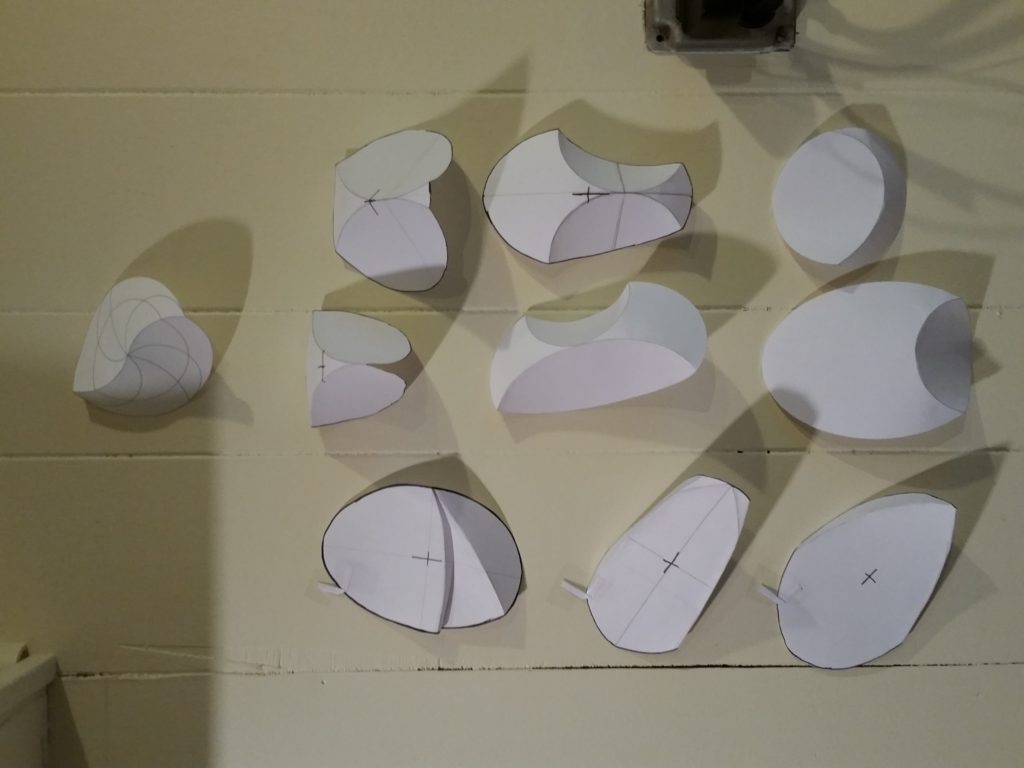
Some Items I have on my wall that makes me think and smile.
-CG



